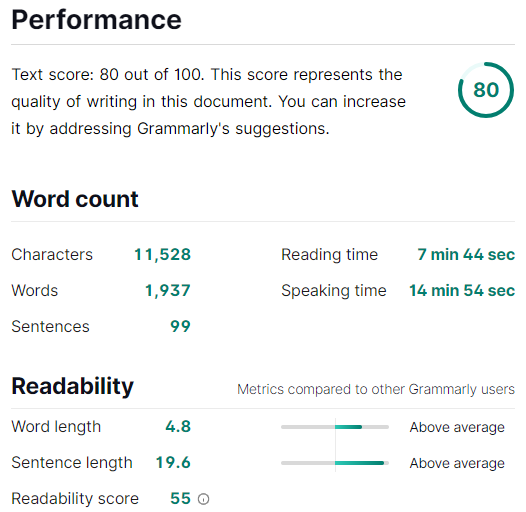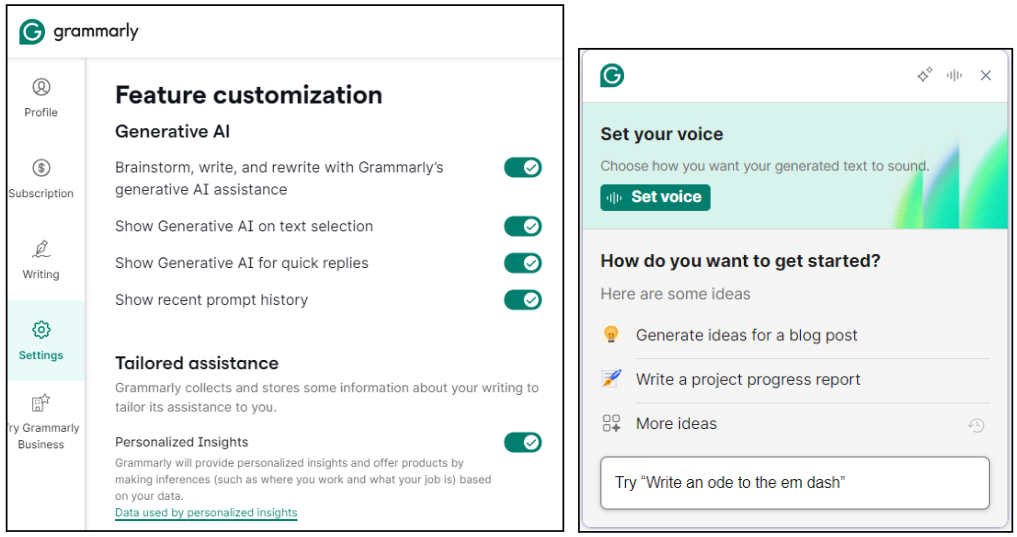Evolution of Grammarly

Since its launch in 2009, Grammarly has evolved from a simple grammar and spelling checker to a comprehensive writing assistant. The platform now offers a range of features beyond its initial scope. In addition to grammar, spelling, and punctuation corrections, Grammarly has expanded to include engagement and delivery assistance, plagiarism detection, and most recently, AI-powered features under the umbrella of Grammarly Authorship. Regardless of which plan you are on, you will appreciate the writing report that can give you a dashboard of feedback on your current writing document. Let’s explore Grammarly’s AI tools to determine their real value.
Grammarly Authorship: AI-Powered Writing Support
Grammarly’s latest feature, Grammarly Authorship, introduces several AI-powered tools to enhance the writing experience. These include content rewriting assistance, composition support, and tone suggestions for all users with AI-generated text detection for those with a premium account. Free users receive 100 AI prompts monthly, while premium plans offer significantly more, catering to more intensive writing needs.
Customization and Flexibility
One of Grammarly’s strengths is its flexibility. Users can toggle AI features on or off as needed, adjusting the tool to their specific writing tasks (Account –> Settings –> Feature Customization). For example, you can adjust the tone to be more formal or casual depending on the audience you’re writing for, or select specific goals like ‘clarity’ or ‘engagement’ to fine-tune suggestions. While this feature has some limitations, it can significantly speed up the process of reaching your final copy. In regards to using Grammarly’s generative AI to assist in the writing process, I wasn’t impressed though it may be a good fit for those who would rather not have a conversation with ChatGPT, Claude, or Perplexity to craft well written content.

AI Detection and Plagiarism Checking
While Grammarly’s Authorship tools focus on enhancing the writing process, the platform’s paid plans include safeguards like AI detection and plagiarism checking to ensure the originality of your work. The plagiarism checker compares your work against over 500,000 documents, providing a percentage of how much your text matches content from various websites. However, users should exercise caution when relying on the AI-generated text detector. In testing, it showed inconsistencies, failing to identify some AI-generated content. For instance, a document largely written by AI with minor human edits received a notice (see image below) that “No AI-generated text was detected.” This highlights the current limitations of AI detection technology across the industry. And, each time you click on the Plagiarisms and AI text check button, it will rescan to check your text even if you have not made any edits since last time you click the button. For those considering a paid plan specifically for the AI detector feature, it might be wise to wait for further improvements in this technology.

Grammarly’s evolution from a simple grammar tool to a comprehensive AI-powered assistant is impressive, though not without its limitations. While its generative AI features may not be a fit for every writer, the platform’s flexibility and range of tools still make it a valuable resource for improving your writing. As AI technology continues to evolve, it will be interesting to see how Grammarly refines its offerings. What’s your take?

